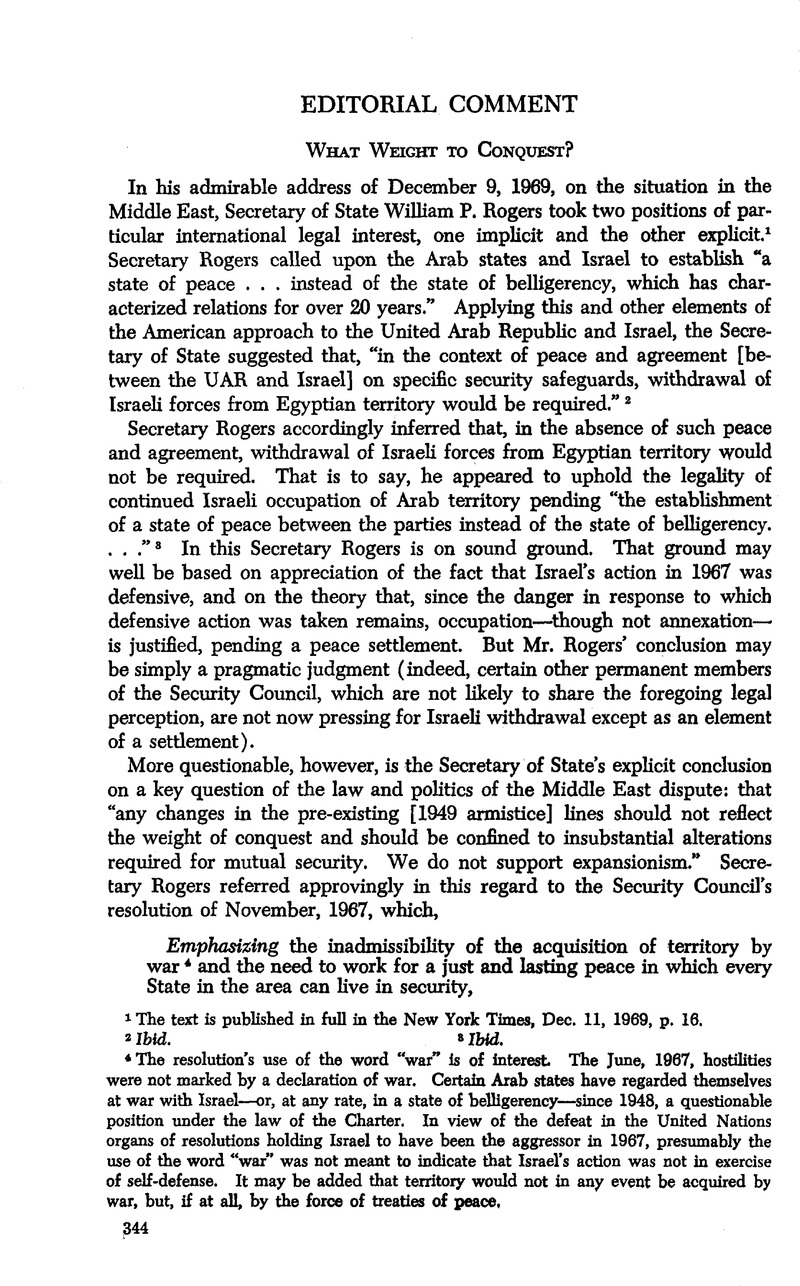Article contents
What Weight to Conquest?
Published online by Cambridge University Press: 28 March 2017
Abstract

- Type
- Editorial Comment
- Information
- Copyright
- Copyright © American Society of International Law 1970
References
1 The text is published in full in the New York Times, Dec. 11, 1969, p. 16.
2 Ibid
3 Ibid.
4 The resolution's use of the word “war” is of interest The June, 1967, hostilities were not marked by a declaration of war. Certain Arab states have regarded themselves at war with Israel—or, at any rate, in a state of belligerency—since 1948, a questionable position under the law of the Charter. In view of the defeat in the United Nations organs of resolutions holding Israel to have been the aggressor in 1967, presumably the use of the word “war” was not meant to indicate that Israel's action was not in exercise of self-defense. It may be added that territory would not in any event be acquired by war, but, if at all, by the force of treaties of peace,
5 It should be noted that the resolution does not specify “all territories” or “the territories“ but “territories.” The subparagraph immediately following is, by way of contrast, more comprehensively cast, specifying “all claims or states of belligerency.“
6 Res. 242 (1967) of Nov. 22, 1967; 62 A.J.I.L. 482 (1968). President Johnson, in an address of Sept. 10, 1968, declared: “We are not the ones to say where other nations should draw the lines between them that will assure each the greatest security. It is clear, however, that a return to the situation of June 4, 1967, will not bring peace. There must be secure and there must be recognized borders … “At the same time, it should be equally clear that boundaries cannot and should not reflect the weight of conquest. Each change must have a reason which each side, in honest negotiation, can accept as part of a just compromise.” (59 Department of State Bulletin 348 (1968).)
7 See, however, Kelsen, Principles of International Law 420-433 (2nd ed. by Tucker, 1967).
8 It should be added that the armistice agreements of 1949 expressly preserved the territorial claims of all parties and did not purport to establish definitive boundaries between them.
9 Elihu Lauterpacht, Jerusalem and the Holy Places, Anglo-Israel Association, Pamphlet No. 19 (1968), p. 52.
- 20
- Cited by




